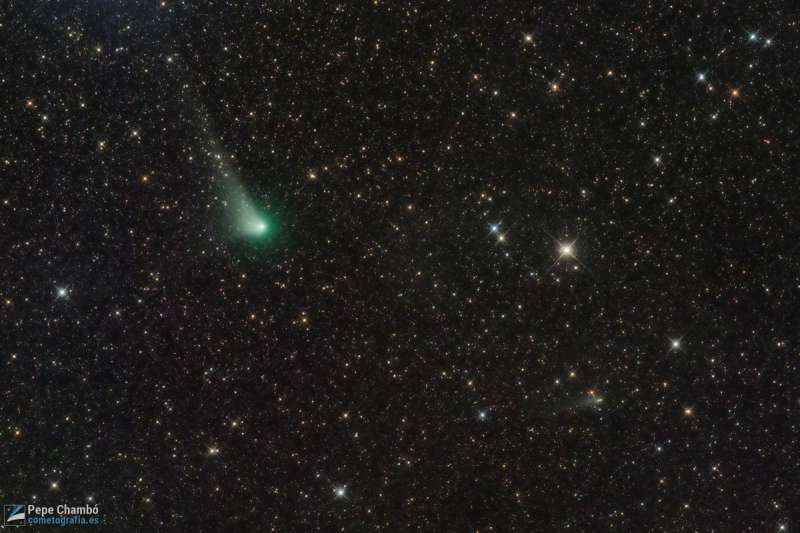
|
Credit & Copyright: Jose J. Chambo
(Cometografia)
Explanation:
Heading for its closest approach to the Sun
or perihelion on December 20, comet
C/2017
K2 (PanSTARRS) remains a sight
for telescopic observers as it sweeps
through planet Earth's southern hemisphere skies.
First
time visitor
from the
remote Oort
cloud
this comet PanSTARRS sports
a greenish coma and whitish dust tail about half a
degree long at the upper left in a deep image from September 21.
It also shares the starry field of view toward the constellation
Scorpius with another comet,
73P/Schwassmann-Wachmann
3,
seen about 1 degree
below and right
of PanSTARRS.
Astronomers estimate that first time visitor comet
C/2017 K2 (PanSTARRS)
has been inbound from the Oort cloud for some 3 million years
along a hyperbolic orbit.
Schwassmann-Wachmann 3 is more familiar though.
The periodic comet loops through its own
elliptical orbit, from just beyond the orbit of Jupiter to the vicinity
of Earth's orbit, once every 5.4 years.
Just passing in the night, this comet PanSTARRS is about 20
light-minutes from Earth in the
September
21 image.
Seen to be disintegrating since 1995,
Schwassmann-Wachmann 3
was about 7.8 light-minutes away.
|
January February March April May June July August September October November December |
| |||||||||||||||||||||||||||||||||||||||||||||||||||||||
NASA Web Site Statements, Warnings, and Disclaimers
NASA Official: Jay Norris. Specific rights apply.
A service of: LHEA at NASA / GSFC
& Michigan Tech. U.
Based on Astronomy Picture
Of the Day
Publications with keywords: comet
Publications with words: comet
See also:
- APOD: 2025 December 1 B 3I ATLAS: Tails of an Interstellar Comet
- APOD: 2025 November 25 B Comet Lemmon and the Milky Way
- 3I/ATLAS: A View from Planet Earth
- APOD: 2025 November 17 B Comet Lemmons Wandering Tail
- APOD: 2025 September 30 B Comet Lemmon Brightens
- APOD: 2025 September 29 B Two Camera Comets in One Sky
- APOD: 2025 September 26 B A SWAN an ATLAS and Mars
